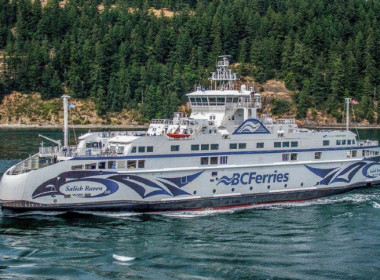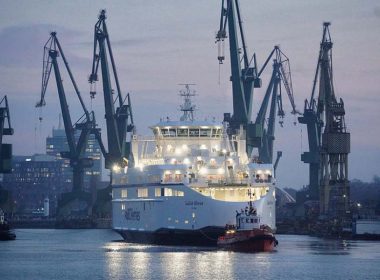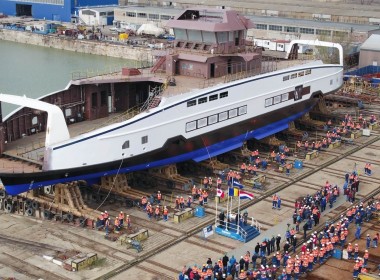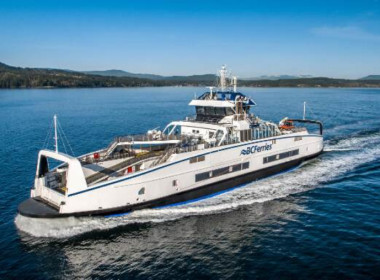VESSEL REVIEW | Salish Heron – BC Ferries’ newest LNG-fueled Ro-Pax to serve Canada’s Gulf Islands

Canadian operator BC Ferries recently took delivery of a new double-ended Ro-Pax ferry fueled by LNG.
The name Salish Heron was chosen for the ferry in honour the great blue heron, a species of migratory bird commonly found in British Columbia. It is the fourth vessel in BC Ferries’ Salish-class, which were all built in Poland.
The new ferry has a length of 107.2 metres, a beam of 23.5 metres, and capacity for 600 passengers and crew and up to 138 vehicles each measuring 6.1 by 2.6 metres. The dual-fuel engines have a combined rated output of 4,438 kW and are designed to also run on diesel as an alternative to LNG, which is the vessel’s main fuel.
The engines enable the ferry to reach speeds of up to 15.5 knots and are placed on resilient mounts to isolate any structure-borne noise. Engine management systems are also installed to reduce machinery running time.
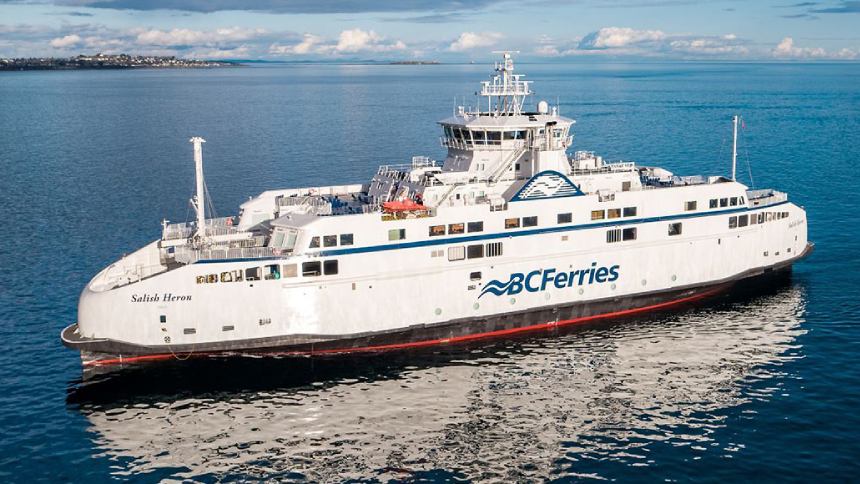
In addition to the LNG fuel guaranteeing significantly reduced emissions of greenhouse gases (between 15 and 25 per cent), NOx (over 50 per cent), SOx (over 85 per cent) and particulate matter, the new ferry also boasts a streamlined hull shape that produces a small wake and electrically controlled propellers that generate low hydrodynamic resistance and quieter, fuel-optimised navigation. Electric propulsion was selected for installation on the Salish-class vessels to eliminate the need for a bulky and maintenance-intensive arrangement consisting of gearboxes and a shaft.
The vehicles are transported on two car decks while the other facilities include a cafeteria, a galley, spaces for passengers traveling with children and pets, and a gift shop.
On December 22, 2021, Salish Heron departed Gdansk, Poland, and sailed under its own power to be delivered to its new owners on a journey that took it more than 10,400 nautical miles across the Atlantic as well as through the Panama Canal and along the Pacific coast of North America. The voyage was successfully completed on March 4, 2022, and the ferry is now undergoing final preparations prior to entering service. The preparations include the application of the vessel’s livery, which was designed by noted Coast Salish First Nations artist Maynard Johnny Jr.
Once in service, Salish Heron will serve the Gulf Islands in the Salish Sea off mainland BC, replacing the older diesel-fueled ferry Mayne Queen on the same route.
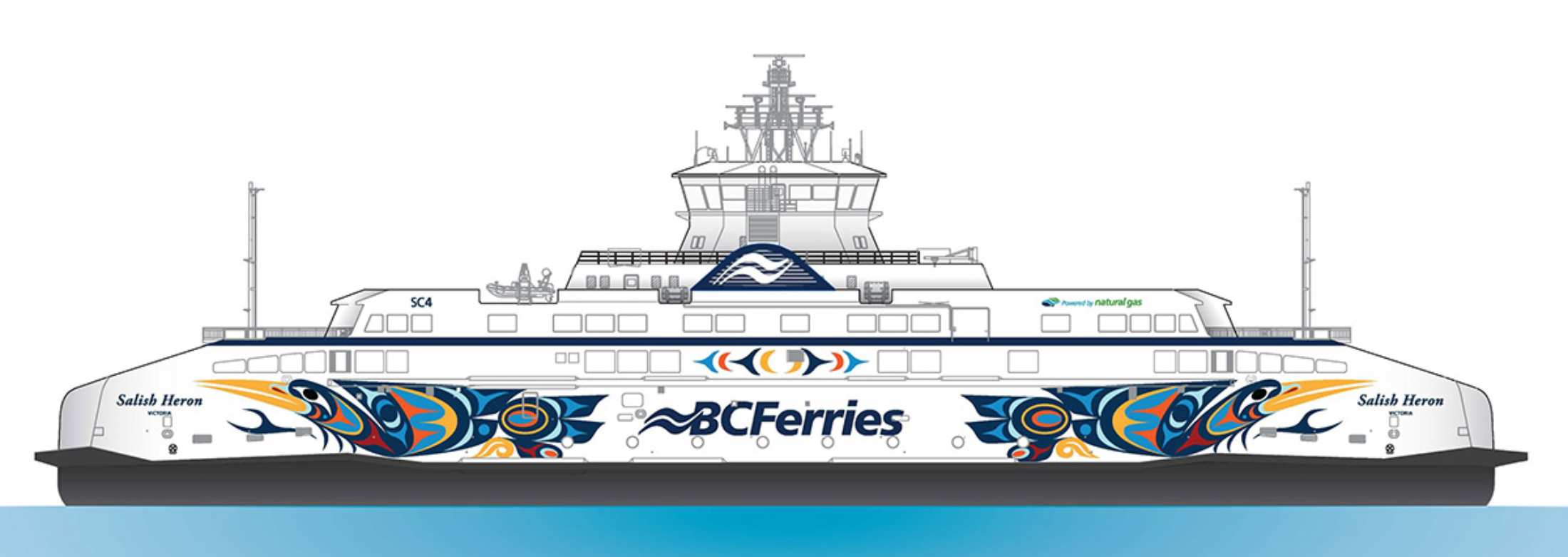
| Salish Heron | |
| SPECIFICATIONS | |
| Type of vessel: | Ro-Pax ferry |
| Flag: | Canada |
| Owner: | BC Ferries, Canada |
| Length overall: | 107.2 metres |
| Beam: | 23.5 metres |
| Capacity: | 138 vehicles |
| Main engines: | 2 x 2,219 kW |
| Propulsion: | Propellers |
| Maximum speed: | 15.5 knots |
| Type of fuel: | LNG; diesel |
| Accommodation: | Cafeteria; galley; gift shop |
| Passengers: | 600 |



